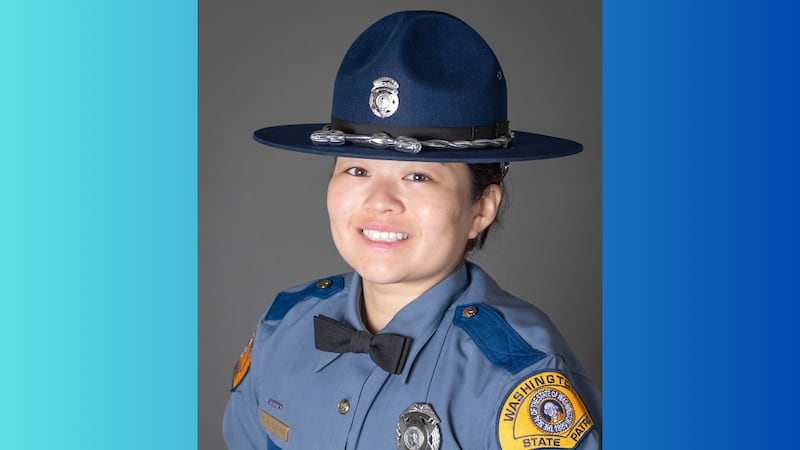TACOMA, Wash. — You probably didn’t know Tacoma has a mini version of a hybrid eBay-Amazon humming in a nondescript warehouse on South 27th Street.
It’s the online auction and processing center for Goodwill’s Olympics and Rainier Region. It serves sales that occur in-state and nationwide.
Each day, according to local representatives, about 400 parcels ship out of the center to those buying through online auctions. In December, the center moved a record 500 items in one day.
It was the second-largest of Goodwill’s more than 100 online sales operations in the country — behind Portland — in November and December.
Sales for this region — 15 counties, including Pierce and Thurston — have grown 900 percent from 2005, when the local online operation began, to 2017 with $408,000 in sales just in December.
“At first (online selling) was really kind of a side to the way we do business,” said Dylan Lippert, the director of e-commerce for the Olympics and Rainier Region.
“But .... it’s a great place if you’re looking for unique items, things not at big-box retailers, things from your childhood that spark memories ... a Pong game, or Atari 2600.”
Katie Sexton, editor of the “Mommy Katie” blog, is a recent user of the Goodwill site, where she found DVDs, “Star Wars” items and other toys for her children.
Like on eBay, said Sexton, of Port Orchard, when using the Goodwill site “you’re bidding on items from a reputable seller, leaving that unease of who you’re sending money to out of the online auction experience, which makes it more enjoyable all around.”
Locally and nationally, Goodwill outlets are gearing up for their version of Cyber Monday.
Scroll down to continue reading
Trending headlines
- Stay away from romaine lettuce for now, consumer group warns
- Landslide danger at Rattlesnake Ridge in Yakima County causes evacuations
- 'Raw water' is the latest craze, but is it safe?
- Local leaders respond to decision to roll back federal pot policy
- Q and A: Will I still be able to get legal weed?
Donation centers see the vast majority of gifts between the end of December and mid-January, whether from donations, downsizing or as fallout from the new trend of “Swedish death cleaning.”
“I just saw on the news, shopping has never been higher, best season ever,” Lippert said. “However, our houses are only so big so ....” he laughs.
And there’s that tax donation receipt that might encourage more end-of-year closet clean-outs.
HOW IT WORKS
Goodwill sales online take place much like any eBay auction, with orders processed much like an Amazon fulfillment center (minus the robots.)
Items brought to a Goodwill donation site are checked to see whether they’ll be sold in local stores or offered online.
Things of national value, say something donated in Tacoma that might interest someone in Tallahassee, Florida, get a second look and might be posted online for national shoppers.
“If it’s worth more than $30 and if it’s unique,” Lippert explained.
To shop “local,” for items supplied by the region’s stores, you go to www.shopgoodwill.com/goodwillwa, then scroll down to “See More Seller’s Items.”
A recent check from more than 140 pages of local items showed such things as a President John F. Kennedy tapestry, a vintage tabletop clock and assorted Barbie dolls.
Online, you can shop from all of Goodwill’s outlets every day.
“Our agency every day — we put up 400 to 600 items a day from 30 shops in the area,” Lippert said.
For the vast majority of the listings, after the first week, you can buy immediately.
When you create your online account, you can set up “Personal Shopper” searches that will notify you when something you’re looking for is available.
You can fine tune your shopping experience to just the local stores, which allows you the option of picking up locally at the Tacoma site, or from the stores represented nationwide.
For items to be delivered, shipping is a penny. Nearly-free shipping has been a game changer for the site.
“What we’re finding is it levels the playing field for our customers,” Lippert said. “It allows individuals in Florida and California, for example, to tell us what they think the item is worth, and it gets more people looking at the auctions.”
He sees the online store as part of a bigger retail trend.
“One of the chief trends is in social shopping,” he said. “You want to get what you want but you want to know that where your money is going is good. So when you buy from Goodwill the money supports job training programs where the Goodwill stores are located.”
DIAMONDS AND DALI
What're the popular items online?
Jewelry, vintage apparel, electronics, musical instruments. Art is popular but those donations are not common.
“An individual donated an entire collection of authentic African artificacts, tribal masks and such,” Lippert said. “All combined those items sold for $23,472.”
A Joseph John Englehart painting — “6 feet tall and 9 feet wide — sold locally for $10,000.
That was an intentional donation, which, Lippert noted, is rare. Other donations just appear out of nowhere.
“We’ve had the odd diamond ring,” Lippert said. “We sold a diamond wedding ring for $12,000.”
And then there was the Salvador Dali etching, which randomly showed up at the Federal Way Goodwill donation station in 2012. It sold for $21,005.
Not everything is a Dali original or even makes the cut. Lippert pointed to a framed piece of art in his office.
The artwork, dropped off at a Goodwill site, bears the name of Joseph Kleitsch, an artist who recently set an auction record in Californi when one of his paintings sold for $912,500.
Lippert found an expert with the National Gallery of Art who specialized in Kleitsch’s work. He emailed a photo of the painting.
“(The painting) was done at the same time the artist was doing his paintings,” Lippert said he was told. “It was done in the same style, the signature is spot on, the medium is age-appropriate. Everything is as it should be.”
But as Lippert noted, the devil is in the details.
“When you take a really close look at the signature ... he painted that with the wrong hand,” he said of the forger.
“Really close, but not it,” the expert told Lippert.
What was the potential value had the painting been real?
“It would have sold for $15,000,” he sighed.
CURATING
Most people don't know the value of what they donate, and sometimes Goodwill workers don't either.
“For example,” Lippert explained, “when we get a gold railroad watch we know this is a treasure. But a 1984 ‘Magnum P-I’ action figure set with a car, we don’t know if it’s worth the $4.97 that’s on the tag or if it’s worth the $452 it sold for.
“So, the first time it’s listed, we let our customers take a look at it and decide if they want to bid on it.”
What about diamond rings that just show up at the collection sites?
“We test all our jewelry so we’re aware of the gold content,” Lippert said. “We’re aware of the size of diamonds.”
“We have individuals who are skilled in determining whether the items are diamond or cubic zirconia, for example, and we sell our items as is, as described.”
It’s important that Goodwill accurately represents the nature of what it’s selling, Lippert said.
“So if we get a Rolex watch donated, that’s independently authenticated to determine whether it is in fact an actual Rolex,” he said.
Lippert has seen all kinds of items come back into fashion and in high demand at auction.
“Back in 2006, people were donating their VCRs for $4.99. Or a Betamax or laser-disc player,” he said. “But at some time, those went from trash to treasure. A Betamax player now sells for $150.”
Also popular are Polaroid cameras and eight-track tape players.
“Those are appreciating in price, as are 1970 electronics,” he said. “Boom boxes also now are incredibly sought after.
“Becoming a treasure is simply when supply is far lower than demand. That’s the nature of thrift.”
LOCAL SUPPORT
Lippert sees the online store, which involves 35 workers, as a way for Goodwill to capitalize on the thrill of instant gratification from shopping online while helping the local economy.
“We do a lot of business supporting local retailers who want to buy from us,” he said. “They buy unique items and are happy to pay that price.
“One of our local businesses buys, restores vintage typewriters. He will buy the typewriters, say five to 10 a month. He’s happy to do his business in a much lower volume, and we need an outlet to sell.
“It wouldn’t be a good job training program for us to have typewriter restoring. But he does it.”
They can spot the retailers buying to resell.
“We always know when we’re helping a local merchant if they come in and pick up 30 items at a time,” he said.
Reselling items bought at auction is no big deal to Goodwill in general or Lippert specifically.
It means that much less in his warehouse.
“If they are able to sell it for a couple of dollars more in six months, good on them,” he said. “We’re still selling for more than we would at our retail store.”
He notes one regular shopper with a passion for yarn.
“One of our best customers buys all of our vintage, collectible and high-value yarn,” he said. “She’ll leave with two shopping carts full. It would be hard to buy that at any Goodwill store.”
Lippert has his own personal version of treasure hunting.
“Back in 1997, my treasure was buying vintage Volkswagen parts on eBay,” he said. “Things you couldn’t find at dealerships.”
He smiles at the memory.
“Over the years, my interests have changed,” he said.
But those days might be back.
“I just purchased a Volkswagen again (a 1987 Vanagon) so probably there are going to be some Volkswagen searches in my future.”
KIRO






